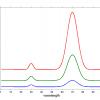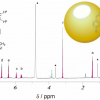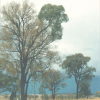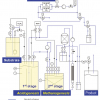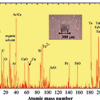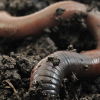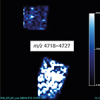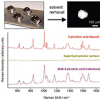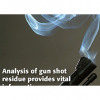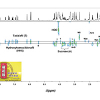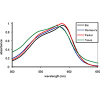Articles and Columns
A.M.C. Davies
Norwich Near Infrared Consultancy, 75 Intwood Road, Cringleford, Norwich NR4 6AA, UK. E-mail: [email protected]
Tom Fearn
Department of Statistical Science, University College London, Gower Street, London WC1E 6BT, UK. E-mail: [email protected]
An NMR tour of Mediterranean anise-flavoured alcoholic beverages.
Peter Jenks
the Jenks Partnership, Newhaven House, Junction Road, Alderbury, Salisbury, Wiltshire SP5 3AZ, UK
The 12th Biological and Environmental Reference Material symposium (BERM 12) is now over: held at Keble College, Oxford, UK, from 7 to 10 July 2009 it was, based on the feedback received, a resounding success, both scientifically and socially. The weather was perfect and the setting magnificent.
William J. Foley
Evolution, Ecology and Genetics, Research School of Biology, Australian National University, Canberra 0200, Australia
A.N. Davies,a H.M. Heiseb and D.F. Ihrigc
aProfessor, SERC, University of Glamorgan, UK, Director, ALIS Ltd, and ALIS GmbH—Analytical Laboratory Informatics Solutions
bISAS—Institute for Analytical Sciences at Dortmund University of Technology, Bunsen-Kirchhoff-Str. 11, D-44139 Dortmund, Germany
cUniversity of Applied Sciences of South-Westphalia, Frauenstuhlweg 31, D-58644 Iserlohn, Germany
The purpose of this article is to give a comparative description of two methods applying ion-beam sputtering in materials research: secondary ion and neutral mass spectrometries (SIMS and SNMS). We shall illustrate the application of the latter by reports on a compositional analysis of perovskite oxides and on an investigation of nanoscaled multilayer structures.
Tony Davies
Norwich Near Infrared Consultancy, 75 Intwood Road, Cringleford, Norwich NR4 6AA, UK
Fans of “Monty Python’s Flying Circus” will realise that what follows is not likely to be my usual column (and they might be hoping that it will be amusing).
Introduction
This column is about “Computational Chemistry”.
This article highlights the versatility of the developed methodology for the measurement of arsenic species in a range of materials from Devon Great Consols (DGC), one of many former mining sites in the south- west of England.
This article shows that MALDI high resolution mass spectrometry demonstrated directly that Hev b 6 and Hev b 1, and also truncated forms thereof, are present on the inner surface of medical NRL gloves. The speed and high accuracy of the applied method and instrumentation makes the detection of surface associated proteins feasible without any prior protein extraction procedure (in situ localisation).
The summer of 2009 has been notable for two metrologically significant events: the annual meeting of the ISO REMCO Committee and the 12th BERM Symposium, neither of which has ever been held before in the UK. It is a massive credit to LGC that they were able to host both meetings and succeeded in making the BERM Meeting one of the best ever! In this column John Hammond, the UK Industry Delegate to ISO/REMCO, reports on the proceedings and decisions of the meeting. I’ll be reporting on BERM 12 in the next column and also explaining the relationship between the UK Reference Materials Working Group, the BSI and ISO/REMCO.
Iain A. Larmour, Jennifer P.E.D. Gray and Steven E.J. Bell
Innovative Molecular Materials Group, School of Chemistry and Chemical Engineering, Queen’s University Belfast, Belfast, BT9 5AG, UK
Spectroscopy plays a vital role in the forensic scientist’s task to analyse crime scene evidence. A new and emerging technique within the forensic field is X-ray fluorescence (XRF) microscopy.
This article outlines the use of the DOSY NMR method applied to drug analysis and screening for counterfeit drugs or fake herbal medicines
I would like to thank everybody who has taken the trouble to respond to my last column on Educating Spectroscopists.1 I am very happy that Ian has allowed me space to reproduce some of them in this edition.
Where is the accreditation of analytical laboratories taking the reference material producer industry? I’ve recently been cogitating the long term impact of the growing spread of ISO 17025 accreditation on the development and supply of certified reference materials and I’m concerned that the “quality business” is driving laboratory accreditation into areas where reference material producers will be under increasing pressure.
In the previous version of this column, Tony Davies (the younger) was being controversial about education and in this issue, I am being controversial about one of the current applications of chemometrics to the use of spectroscopy in industry.
This short review shows that UV/visible spectroscopy plays a key role in the discrimination of colour in the forensic analysis of fibres and inks. The application of chemometrics, however, is vital in many cases to enhance such discrimination and to put it on a quantitative basis so providing objective justification for the conclusions of the analyst.
Following on from our previous foray into the UV-visible area of the spectrum, in this article we discuss its nearest neighbour in the spectral scale, namely near infrared (NIR) spectrometry. The NIR spectral region lies between 780 nm and 2500 nm (4000 cm–1 to 12,800 cm–1) bridging the more well-known and analytically used regions of the UV-visible (190–780 nm) and the infrared (4000–600 cm–1).
In 2007 we introduced our method in Spectroscopy Europe describing the identification of furs by hair digest based matrix-assisted laser desorption/ionisation time of flight (MALDI-ToF) mass spectrometry (MS). This so-called SIAM (Species Identification of Animals) method can also be used for the species determination of ancient furs.
Now maybe I’m going to be a little controversial in this month’s column and I might just touch a nerve in the readership. If you are of a nervous disposition or are easily upset, this column may damage your health! However, I can’t stop worrying about the miss-match between what we teach undergraduate students about spectroscopy and what they will be expected to understand about our subject when they finally end up in gainful employment.

